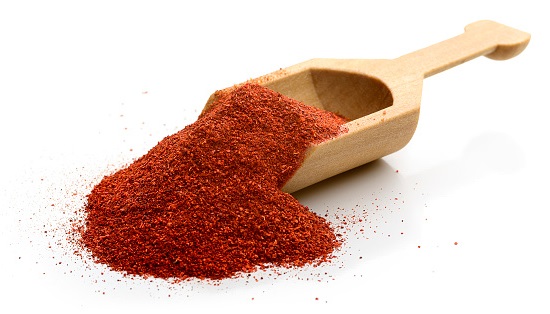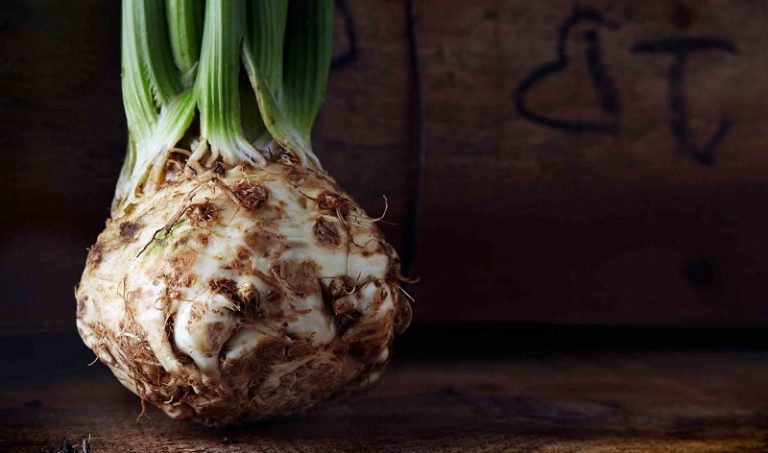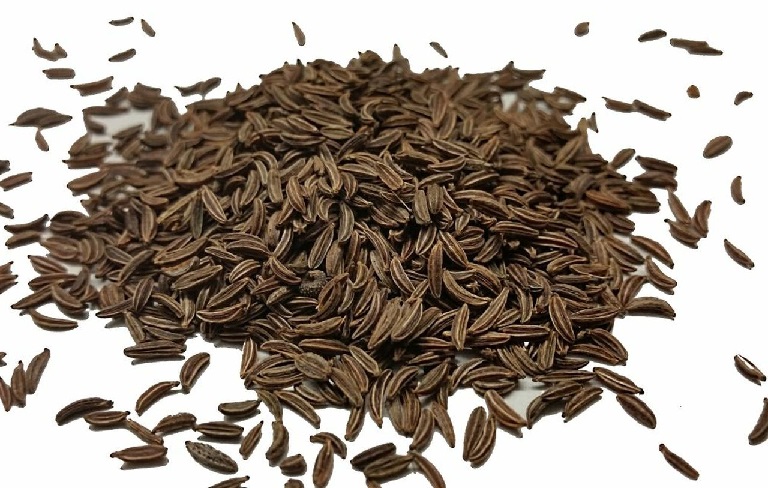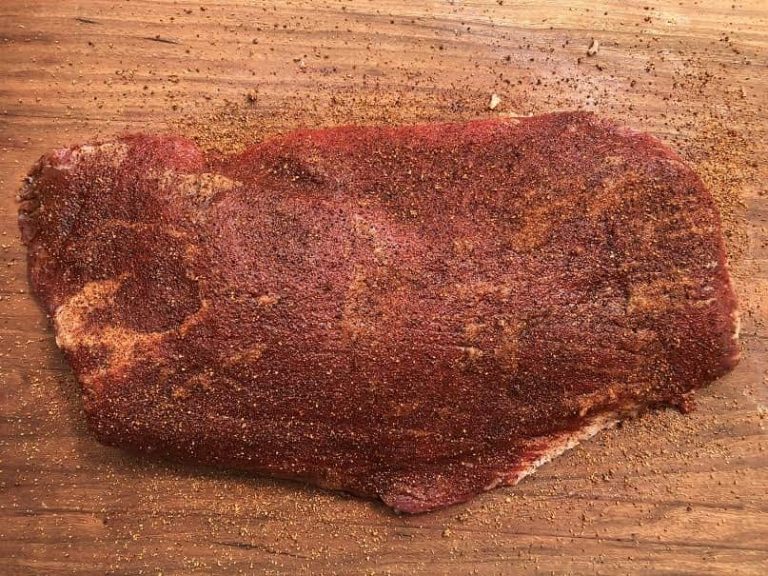Dark Soy Sauce Substitute: Different Substitutes to Replace With
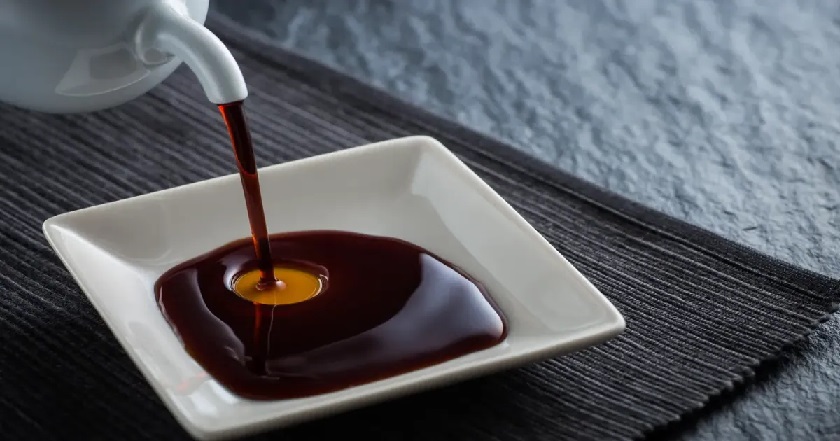
Some people are allergic to soy sauce, and some can’t find Dark Soy Sauce anywhere near. Whatever the reason it is that you can’t use Dark Soy Sauce in your recipes; we gathered all the Dark Soy Sauce substitutes for you in this article.
Dark soy sauce is a popular condiment in East and Southeast Asia. It is made by fermenting soybeans with roasted wheat, barley, or other grains. The flavor of dark soy sauce is complex and slightly sweet. However, it can be difficult to find in some parts of the world.
However, there are times when you might not have access to dark soy sauce or simply want to leave it out of a dish. This article provides different substitutes that can be used in its place
Best Dark Soy Sauce Substitutes
Have a hard time finding a suitable substitute for you? Try those substitute suggestions:
Light Soy Sauce
Light soy sauce is a versatile condiment that you can use to add flavor to your dish. It has a slightly sweet and salty taste, making it the perfect addition to any meal.
Light soy sauce is made without any caramel coloring, so it doesn’t have the same appearance as dark soy sauce. It is used in different applications because of its light flavor and color.
In contrast to dark soy sauce, light soy sauce is thinner and not as viscous so it’s not the best choice for dipping sauces. Instead, use it in noodle dishes or to season meat or fish.
In general, light soy sauce is not as sweet as dark soy sauce. If you are using light soy in a recipe that calls for dark soy, you may need to add a little more sugar to make up for the difference.
Teriyaki Sauce
Teriyaki sauce is a popular Japanese sauce that is made with soy sauce, sake, sugar, and ginger. It has a glossy, dark appearance and a slightly sweet and tangy flavor. It has a similar flavor profile to dark soy sauce.
Teriyaki sauce is well-suited for use as marinade, ingredient, or condiment. It has a slightly sweet and savory taste that pairs well with chicken, beef, fish, and vegetables. It is used as a caramelizing agent in many of the same dishes, such as stir-fries and braised meats.
Dark soy sauce is a key ingredient in teriyaki sauce, and it gives the dish its characteristic salty, sweet flavor. However, if you’re looking for a soy-free or gluten-free version of this popular sauce, there are some substitutes that will work well. Just remember that teriyaki’s signature spices make its flavor profile slightly different from using dark soy sauce.
Oyster Sauce
Oyster sauce is made from oysters. It has a salty and sweet flavor and is often used as a dark soy sauce substitute.
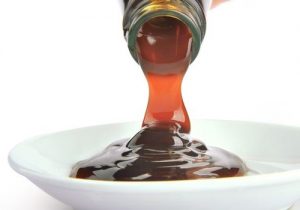
With the rise of umami-inspired dishes in recent years, oyster sauce has become a popular condiment in kitchens all over the world. This sauce is known for its unique sweet and salty taste, which can be hard to replicate.
In a pinch, if you are looking for a dark soy sauce substitute, look no further because the oyster sauce can be used in the same quantities without any problems and it brings out the same flavors and qualities in your dish.
Hoisin Sauce
Hoisin sauce is a popular Chinese condiment made from fermented soybeans, vinegar, sugar, and spices like sesame seeds, garlic, and chili pepper. Hoisin sauce is a perfect condiment to add to your stir-fry dishes. It has a sweet and savory flavor that will enhance the taste of your food. It’s typically used as a marinade for meat, seafood, and vegetables. The sauce is dark brown in color with a sweet and spicy flavor.
Although hoisin sauce is a common ingredient in Chinese cuisine, it doesn’t have to taste the same as the original recipe. In fact, there are many different types of hoisin sauce that cater to different tastes. Whether you’re looking for a spicy or sweet hoisin sauce, you can find one that will fit your needs.
Hoisin sauce is a thick, pungent sauce. It is a great dark soy sauce substitute because it has a similar flavor profile. It tastes delicious with veggies and goes well with many other dishes that would otherwise use dark soy sauce as an ingredient.
Double Black Soy Sauce
Double black soy sauce is a dark soy sauce made with roasted soybeans, wheat, and malt. It is a popular condiment in East Asia and is often used as a substitute for other types of soy sauce.
Double black soy sauce is made with a combination of both light and dark soy sauces. It is thicker and sweeter than regular soy sauce because it contains molasses. This makes it the perfect condiment for fried rice or char siu pork dishes.
Double black soy sauce is the perfect substitute for dark soy sauce. It has a thicker consistency and a more intense flavor that will give your dish the desired taste.
Double black soy sauce is a high-quality, intense soy sauce that should be used sparingly in order to avoid overwhelming the flavor of the dish. It’s perfect for adding a touch of salty richness to your meal without making it too greasy.
Double black soy sauce will give your dish the same taste as if you used dark soy sauce because it has a similar texture and flavor. However, it should be used sparingly as it is much saltier than dark soy sauce.
Worcestershire Sauce
Worcestershire sauce is a fermented sauce that is used to enhance the flavor of food. It is made with anchovies, tamarind, garlic, onion, and other spices. The sauce is great for adding a boost of umami flavor to dishes.
If you are looking for a gluten-free replacement for Worcestershire sauce, soy sauce is a great option. It is commonly used in Asian cuisine and has a similar flavor profile.
If you’re looking for a soy sauce substitute with a similar flavor profile, try Worcestershire sauce; just remember that Worcestershire sauce doesn’t have the same level of sweetness as soy sauce.
Mushroom-flavored Dark Soy
Mushroom-flavored dark soy sauce is a great alternative to regular dark soy sauce. It has a similar flavor profile, but with the added bonus of being infused with mushrooms. This gives it a richer, earthier taste that can enhance the flavor of any dish.
Dark soy sauce is made with a variety of ingredients, but the most notable one is mushrooms. You can interchange mushroom-flavored dark soy sauce with regular dark soy sauce in recipes that call for it. The flavor is a little bit stronger, but it will still add the desired salty and savory taste to your dish.
You can substitute 1/2 cup of dark soy sauce in a pinch for mushroom-flavored dark soy sauce. The flavor won’t be exactly the same, but it will come close enough that your dish won’t suffer.
Tamari
Tamari sauce is a soy sauce with a similar flavor to its Chinese inspiration. It is made without wheat and has a slightly different flavor than dark soy sauce.
One potential benefit of tamari is that it is gluten-free. This can be an important consideration for those who are gluten intolerant or have celiac disease.
It can be used as a substitute in most recipes, but keep in mind that it might not taste the same.
Coconut Aminos
Coconut Aminos are a healthier and soy-free version of dark soy sauce. They have a slightly sweet, salty flavor and are perfect for adding to stir-fries, marinades, and dressings.
Coconut Aminos is a great soy sauce alternative for those who are looking to avoid gluten, dairy, and sugar. They are made with sea salt and fermented coconuts, so they have a slightly sweet and salty taste that goes well with most Asian dishes.
Coconut Aminos is a great low-sodium alternative to dark soy sauce. They have a slightly sweet taste and are perfect for adding flavor to dishes. Coconut Aminos also have only 90 milligrams per serving size, while dark soy sauce has 360 milligrams.
Miso Paste
Miso paste is a mixture of miso and soy sauce that is used for flavor. The paste can be used in many different dishes, such as ramen or stir-fry. It is also a great way to add protein to your meal.
Miso paste is a great soy sauce substitute for those who are looking for the same taste but not the same color. It is made of fermented soybeans, rice, or barley and has a salty, earthy flavor.
Miso paste is a great way to add flavor to dishes without using many ingredients. It’s also a healthy way to add protein and minerals to your food.
A mixture of miso paste and soy sauce is a popular replacement for dark soy sauce. The miso to soy sauce ratio is typically 1 cup of dark soy sauce to 1 tablespoon of miso paste in most recipes but can be adjusted to taste.
Although miso paste is not a perfect substitute, it will give the dish a similar flavor. The color of the dish may not be as dark as expected, but the taste will still be very inviting.
Fish Sauce
Fish sauce is a condiment made from fish that has been fermented with salt. It is used in many Southeast Asian cuisines, and while it does add a delicious flavor, it is not vegetarian-friendly as it contains anchovies.
It is a dark soy sauce substitute that has a punchy, strong flavor; fish sauce is a great option. It is made with fermented fish and salt, so it has a very distinctive taste that can add depth of flavor to your dish.
You can use 1 tablespoon of fish sauce per cup of dark soy sauce. This will give your dish a similar flavor profile.
When it comes to substituting dark soy sauce in a recipe, start by using half the amount and then adjust to taste; it is very salty, so it should be used sparingly in order to avoid making your dish too salty. Keep in mind that each dish will vary, so you may need more or less depending on the recipe.
Balsamic Vinegar
Balsamic vinegar is made from grapes. It has a sweet and sour taste and can be used in many different dishes.
Balsamic vinegar is a traditional Italian condiment that has been around for centuries. It is made from the concentrated juice of Trebbiano grapes that are boiled down and aged in wooden barrels.
Balsamic vinegar is a great way to add sweetness and sourness to your dishes while also imparting a dark color. It’s perfect for adding depth of flavor to any dish, so give it a try the next time you’re cooking!
Balsamic vinegar is a versatile ingredient that can be used in both sweet and savory dishes. It also pairs well with other strong flavors, such as garlic and onion. However, it is quite acidic and requires sugar to balance it out.
Kecap Manis
Kecap Manis is a type of Indonesian soy sauce that has a thicker consistency and a sweeter taste than other soy sauces. It is made from soybeans, sugar, water, and salt. Kecap Manis can be used as a marinade or as a condiment for rice or noodles.

Kecap Manis has a richer flavor that is slightly sweet. This is due to the addition of palm sugar in the recipe. The mahogany color is also a result of the sugar. If you are looking for a substitute for dark soy sauce, try using Kecap Manis.
In addition, vegan dishes can also use Kecap Manis as a soy sauce substitute. It has a thicker consistency and a slightly sweeter taste that will enhance the flavor of any plant-based dish.
In fact, if you need to substitute dark soy sauce in a recipe, just use 1 teaspoon of Kecap Manis instead.
Koikuchi Shoyu
Koikuchi Shoyu is a dark soy sauce that has a brown color and a salty, mildly sweet flavor. It is one of the most popular types of soy sauce in Japan and is used in many dishes.
Koikuchi Shoyu has an umami flavor. Umami is the fifth taste, resulting from the soybean giving the sauce a slight fruitiness. This makes Koikuchi Shoyu a versatile soy sauce that can be used in various dishes.
Koikuchi Shoyu is made without any animal products. It is made with wheat, soybeans, and salt.
This beef stir-fry in dark soy sauce and lemon is delicious when you want a quick and easy meal. The key to this dish is the Koikuchi Shoyu, a Japanese soy sauce with a darker color and richer flavor than other soy sauces.
Usukuchi Shoyu
Usukuchi soy sauce, also known as light soy sauce is made with dark soybeans and has a slightly salty and smoky flavor. It is a vegan Japanese soy sauce with a thinner consistency and a saltier taste. It has a mild sweetness that comes from the addition of mirin, which is rice wine.
Usukuchi Shoyu is used to add flavor to fried rice and noodle dishes, and can also be mixed with other sauces to create unique flavors.
If you are using Usukuchi Shoyu instead of Chinese dark soy sauce, use it sparingly as it will be much saltier and can easily overpower your dish.
Shiro Shoyu
Shiro Shoyu is a vegan-friendly Japanese soy sauce that is made from wheat, soybeans, and salt. Shiro Shoyu has a slightly sweet and salty taste than other soy sauces and can be used in many different dishes.
If you don’t have dark soy sauce available, you can substitute it with Shiro Shoyu.
Maggi Seasoning
Maggi Seasoning is a Swiss-made sauce that is commonly used in Indian cuisine. It is a dark brown powder that contains salt, spices, and flavorings. The seasoning can be used to add flavor to dishes or as a marinade.
Maggi seasoning is a wheat-based sauce that is popular in Asia for adding flavor to soups and stir-fries. It has a slightly salty, savory taste that enhances most dishes’ flavor.
Maggi seasoning is a great alternative to Dark soy sauce that still gives the same flavorsome taste. Dipping sauces and stews are delicious treats you cannot miss when using this sauce as an alternative for dark soy sauce.
When substituting Dark soy sauce with Maggi seasoning, it is best to use an equal volume. This will ensure that the flavor profile of your dish stays consistent.
Liquid Aminos
Liquid Aminos are a healthier and more natural alternative to soy sauce or Tamari. They are wheat-free and gluten-free, making them a great choice for people with dietary restrictions.
Liquid Aminos is a great soy sauce substitute for those who are gluten-free or vegan. They have a very similar flavor to soy sauce and can be used in many of the same recipes.
If you are looking for a substitute for dark soy sauce, Liquid Aminos are a good option. They have a similar flavor and are available at most grocery stores.
However, it’s important to use a 1:1 ratio as it doesn’t have the same flavor profile as soy sauce.
Molasses
Molasses is a thick, dark syrup that is made from sugarcane or sugar beets. It has a thick texture, bitter-sweet flavor, and a dark color. Molasses can be used as a sweetener in baking or cooking, or it can be added to sauces and marinades.

If you’re looking for a substitute for dark soy sauce and can’t find any, molasses is the next best thing. In many recipes, molasses can be used as a substitute for dark soy sauce. It has a similar flavor profile and will add a touch of sweetness to your dish.
Just add a pinch of molasses and adequate salt to the recipe to get the desired flavor as soy sauce is quite salty.
Kikkoman Japanese Soy Sauce
Kikkoman Japanese Soy Sauce is a popular condiment made from soybeans, wheat, salt, and water. It’s used in various Asian dishes or as a dipping sauce.
Kikkoman Japanese soy sauce is brewed in the United States. The recipe is a closely guarded secret, but it is known that the soy sauce undergoes a long and slow brewing process to achieve its unique flavor.
This soy sauce is a high sodium choice, but it has a less salty taste than some of the other brands. It can be used as a condiment in various dishes or as a marinade for meat or seafood.
This is a good option if you are looking for a soy sauce that will give your dish a more intense flavor. However, be careful not to use too much as it can quickly make your dish too salty.
What is Dark Soy Sauce?
Dark soy sauce is a type of soy sauce that is made with roasted soybeans. It has a darker color and richer flavor than other types of soy sauce. It is used in many different Asian dishes as a dipping sauce, marinades, sauces, gravies, and stir-fries.
Dark soy sauce is a type of soy sauce that has been fermented for a longer time, and this deepens the flavor and color. It is usually used in stir-fries, marinades, and as a dipping sauce.
Dark soy sauce is a popular condiment used in East and Southeast Asian cuisine. It is thicker and has a slightly sweeter taste than regular soy sauce.
Dark soy sauce is a key ingredient in Chinese cuisine, adding an irresistible effect to cooked meat when braised. It is also used as a marinade and has a thick consistency that makes it perfect for coating food.
When you are out of dark soy sauce, there are a few substitutes that you can use. For example, Chinese black soy sauce or mushroom soy sauce can be used as a substitute. Additionally, molasses or Worcestershire sauce can also work in a pinch and many others.
Health Benefits & Nutrition Facts
Dark soy sauce is made from fermented soybeans and has a higher concentration of antioxidants that help to fight free radicals. Free radicals are unstable molecules that can cause cell damage, leading to diseases such as cancer.
It is also a good source of vitamins, minerals, and protein.
While dark soy sauce has a lot of benefits, it is important to note that any kind of cell damage can lead to cancer or other diseases. Soy sauce is high in salt and can harm your health if consumed in large quantities. One tbsp (16grams) of dark soy sauce contains the following:
| Total Fat 0.1g | 1% |
| Cholesterol 0mg | 0% |
| Sodium 879mg | 37% |
| Potassium 70mg | 2% |
| Dietary Fiber 0.1g | 1% |
| Protein 1.3g | 0.39% |
| Vitamin A | 0% |
| Vitamin C | 0% |
| Calcium | 0.4% |
| Iron | 1.3% |
Making Dark Soy Sauce at Home
This recipe makes it simple to make your own handmade version.
Ingredients
- 2 cups of dark brown sugar
- 1 cup of regular soy sauce
- ½ cup of water
Instructions
- In a saucepan, combine dark brown sugar and water and cook over high heat, stirring occasionally, until it boils.
- Stop stirring once the sugar has dissolved, and continue to cook on medium-high until the color darkens.
- Pour ordinary soy sauce into the skillet and stir when the color resembles molasses.
- Stir constantly until the texture thickens. Then, Remove the black soy sauce from the heat and store it in an airtight container.
- Keep any leftover dark soy sauce refrigerated for later use whenever you need it.
Dark Soy Sauce, or Light Soy Sauce?
What is the difference between the two and how can you choose the suitable one for you?
Dark Soy Sauce vs. Light Soy Sauce
Dark soy sauce is said to be more full-bodied and deep in color. It is made with a longer fermentation process, which gives it a stronger flavor. Light soy sauce, on the other hand, is lighter in both color and flavor. It is made with a shorter fermentation process, so it doesn’t have as much flavor as dark soy sauce.
| Dark Soy Sauce | Light Soy Sauce |
|
|
In general, dark soy sauce is used when a slightly thicker and richer flavor is desired, while light soy sauce has a milder flavor that goes well with most dishes. However, they are still interchangeable in most recipes.
Top 5 Recipes for Dark Soy Sauce
Dark Soy Sauce is used in many wonderful recipes. Here are the ones we chose for you:
Cantonese Soy Sauce Pan-Fried Noodles
Ingredients
- 1 1/2 cups of bean sprouts
- 2 teaspoons of soy sauce
- 2 scallions
- 1 teaspoon of dark soy sauce
- ¼ teaspoon of salt
- ½ teaspoon of sesame oil
- ¼ teaspoon of sugar
- 8 oz. thin fresh Hong Kong Style Egg Noodles
- ½ tablespoon of Shaoxing rice wine
- 3 tablespoons of vegetable oil
Instruction
2 quarts of water, brought to a boil Drain the bean sprouts after rinsing them in cool water. The scallions should be Julienned. Set aside a small bowl containing the soy sauces, sesame oil, salt, sugar, wine, and white pepper.
Bring the noodles to a boil. Boiling fresh noodles for 1 minute is recommended. Boil for 2 minutes for dried noodles. Drain it after rinsing in cold water.
Heat the pan over high heat and coat it with a tablespoon of oil (you can also use a cast iron or non-stick pan for this).
To equally distribute the oil and crisp the bottom layer of the noodles, spread the noodles in a thin, equal layer on the wok and tilt it in a circular motion. The first side should take roughly 5 minutes.
Overturn the noodles. Allow the other side to crisp up by adding another tablespoon of oil around the wok’s perimeter. Don’t worry if you can’t flip the noodles all at once. During this cooking stage, the only purpose is to achieve an even crispness and to dry out the noodles. Place the noodles on a dish and set them aside.
Preheat the pan to high. Toss in a tablespoon of oil and all of the scallion’s white portions to the pan. Cook for a minute and a half. After that, add the noodles to the pan and toss them thoroughly, breaking them up so they don’t all stick together in one huge clump. Toss in the soy sauce mixture continually for a few minutes. Maintain a high heat setting.
Toss in the bean sprouts after the noodles are evenly golden brown. Toss in the remaining scallions and toss for another 1 to 2 minutes, or until the bean sprouts are just starting to turn clear. The sprouts should be cooked yet still crisp.
Place on a plate and serve!
Nutrition facts of this recipe
-Calories: 387kcal (19%)
-Carbohydrates: 35g (12%)
-Protein: 9g (18%)
-Fat: 25g (38%)
-Saturated Fat: 18g (90%)
-Cholesterol: 33mg (11%)
-Sodium: 723mg (30%)
-Potassium: 192mg (5%)
-Fiber: 3g (12%)
-Sugar: 5g (6%)
-Vitamin A: 120IU (2%)
-Vitamin C: 13mg (16%)
-Calcium: 32mg (3%)
-Iron: 2mg (11%)
Supreme Soy Sauce Fried Rice
Supreme Soy Sauce Fried Rice is a popular dish in Shanghainese cuisine that is found on many restaurants’ menus.
Ingredients
For the Soy Sauce:
- 2 teaspoons of fish sauce
- 2 tablespoons of light soy sauce
- 2 tablespoons of dark soy sauce
- 2 teaspoons of Shaoxing wine
- 1 teaspoon of canola oil or vegetable
- 1 teaspoon of sugar
- 1 teaspoon of oyster sauce
For the fried rice:
- 1 teaspoon of Shaoxing wine
- 3 divided tablespoons of oil
- 3 finely chopped scallions
- 6 cooled cups of cooked rice
- Salt
- 3 eggs
Instructions
Make the soy sauce mixture first. Combine all of the sauce ingredients in a medium saucepan over medium heat. To dissolve the sugar, stir it in. When the sauce begins to boil, remove it from the heat and set it aside. You can use it right away for the fried rice or let it cool completely before keeping it in an airtight container. To be specific, this recipe only requires a small bit of sauce. If you’re creating a larger amount, double or quadruple the recipe as needed.
One teaspoon Shaoxing wine and a touch of salt to your beaten eggs In a wok, heat 1 tablespoon of oil over high heat. Scramble the eggs quickly and transfer them to a serving dish. Leave aside.
Reduce the heat to medium-low and pour in 2 tablespoons of oil into the pan. Stir in the rice for a few minutes to ensure that it is thoroughly heated. Now add the scrambled egg and the soy sauce mixture. Stir everything together until it’s completely blended. Stop for a taste test to check whether more salt is required. Finally, add the sliced scallion and whisk to mix, then serve!
Tips for making fried rice
- When beating the eggs, always add a little bit of Shaoxing (rice) wine. It imparts taste and perfume to the eggs.
- Add a small amount of water or Shaoxing wine if the rice becomes clumpy. The steam will break apart the clumps immediately.
- Reduce the amount of water used to make fried rice by 15-20% when cooking fresh rice. Perhaps now is a good time to revisit our rice topic and brush up on your rice-making techniques. It is advised, but not required, to use day-old rice for fried rice.
Nutrition Facts
-Calories: 481kcal (24%)
-Carbohydrates: 70g (23%)
-Protein: 13g (26%)
-Fat: 15g (23%)
-Saturated Fat: 3g (15%)
-Cholesterol: 123mg (41%)
-Sodium: 1449mg (60%)
-Potassium: 191mg (5%)
-Fiber: 1g (4%)
-Sugar: 2g (2%)
-Vitamin A: 270IU (5%)
-Vitamin C: 1.7mg (2%)
-Calcium: 49mg (5%)
-Iron: 1.6mg (9%)
Soy Sauce Chicken
Soy sauce chicken is a dish found in many restaurant windows and is often near other traditional dishes like Poached Chicken, Duck, and Roast Pork. Done right, soy sauce chicken is tough to beat for flavor and texture.
Ingredients
- A 4 pounds chicken (not frozen)
- 7 slices of ginger
- 2 teaspoons of oil
- 2 cut into 3-inch pieces and smashed flat scallions
- 1 ½ cups of Chinese rose wine
- 3 star anise
- 1 ½ cups of soy sauce
- 1 cup of sugar (add more if needed)
- 1 1/4 cup of dark soy sauce
- 10 cups of water
- 2 teaspoons of salt
Instructions
Remove the chicken from the fridge an hour before you cook it. When it goes into the pot, it should be at room temperature. Remove the giblets and give the chicken a thorough washing both inside and out.
Take out your stock pot. It should be a tall, narrow pot that barely fits the chicken because it needs to be completely buried in the cooking liquid (if you use a larger pot, you’ll need to adjust all of the ingredients correspondingly to make extra cooking liquid). Add the oil and ginger and cook over medium low heat.
Allow 30 seconds for the ginger to caramelize. After adding the scallions, cook for another 30 seconds. Bring the star anise and wine (Shaoxing rice wine, rose wine, or a combination of both) to a simmer to cook off some of the alcohol. Combine the soy sauce, dark soy sauce, sugar, salt, and water in a mixing bowl. Return to a simmer and cook for another 20 minutes on low heat.
Bring the liquid to a gentle boil by increasing the heat (i.e. a little hotter than a simmer, but not quite as hot as a rolling boil). Lower the chicken slowly into the pot, breast side up, using a big roasting fork inserted into the cavity. Ensure that any air pockets in the cavity are completely filled with liquid. At this point, the chicken should be completely submerged.
The cooking liquid will cool after the chicken is added. Allow it to cook for 5 minutes over medium-high heat. After that, carefully remove the chicken out of the water with your large fork and dump the liquid within the cavity, which will be cooler than the liquid around it. Return the chicken to the pot, making sure there are no air pockets in the cavity this time. If the chicken isn’t entirely submerged, baste the exposed part with cooking liquid on a regular basis.
Return the liquid to a slow simmer, which should take around 10 minutes. Keep it at a low simmer for 25 minutes (the liquid should be around 210 degrees F). Remove the pot from the heat, cover it, and set it aside for another 15 minutes. Allow the chicken to settle on a cutting board. You can place a meat thermometer on the thickest part of the thigh to make sure it’s reached 165 degrees F if you want to be sure.
As the chicken cools, baste it occasionally with the sauce from the pot to keep the skin wet. Serve with some of the sauce from the pot over rice!
Note: You may also use chicken leg pieces in this recipe and reduce the cooking time appropriately because they are simpler to handle and cook. You can also freeze the sauce/cooking liquid once you’ve finished cooking the chicken for later use (though you may have to re-season the sauce).
Nutrition Facts
-Calories: 371kcal (19%)
-Carbohydrates: 8g (3%)
-Protein: 28g (56%)
-Fat: 23g (35%)
-Saturated Fat: 6g (30%)
-Cholesterol: 109mg (36%)
-Sodium: 770mg (32%)
-Potassium: 312mg (9%)
-Fiber: 1g (4%)
-Sugar: 7g (8%)
-Vitamin A: 245IU (5%)
-Vitamin C: 3.1mg (4%)
-Calcium: 35mg (4%)
-Iron: 1.7mg (9%)
Soy Sauce Caramelized Noodles With Sweet Potato & Mushrooms
Ingredients
- 1 ½ tablespoon of light or regular soy sauce
- 1 tablespoon of Shaoxing wine
- 1 tablespoon of dark soy sauce
- ½ teaspoon of sesame oil
- 3 tablespoons of water
- 1 tablespoon of brown sugar
- 6 tablespoons of divided vegetable oil
- 8 oz. of thinly sliced shiitake mushrooms 225g
- 1 pound of yakisoba 450g
- 1 peeled and julienned medium sweet potato
- 2 tablespoons of finely chopped cilantro and scallion (optional)
Instructions
Combine the soy sauce, dark soy sauce, wine, sesame oil, brown sugar, and water in a medium mixing bowl.
In a wok over medium-high heat, heat 3 tablespoons oil and add the julienned sweet potatoes. Allow the sweet potatoes to brown for around 5 minutes in a stir-fry. Remove the wok and set it aside.
Add the mushrooms to the wok with another 3 tablespoons of oil (still over medium-high heat). Stir-fry until the mushrooms are softened and gently browned, adding a splash of oil if the pan becomes too dry.
Turn the heat up to high and toss in the noodles, sweet potato, and sauce combination. Stir-fry and stir everything together rapidly. Serve with a sprinkling of cilantro and scallions (if using).
Nutrition Facts
-Calories: 416kcal (21%)
-Carbohydrates: 45g (15%)
-Protein: 10g (20%)
-Fat: 23g (35%)
-Saturated Fat: 17g (85%)
-Sodium: 1211mg (50%)
-Potassium: 306mg (9%)
-Fiber: 5g (20%)
-Sugar: 10g (11%)
-Vitamin A: 4625IU (93%)
-Vitamin C: 0.7mg (1%)
-Calcium: 10mg (1%)
-Iron: 0.7mg (4%)
Hong Kong Style Clay Pot Rice Bowl
Hong Kong Style Clay Pot Rice Bowl is a delicious and easy meal to make. It features cured pork belly, Chinese sausage, and a quick sauce that can be stirred in with fresh green onion.
Ingredients
- 1 chopped scallion
- 1 cup of long grain rice
- a piece of cured pork belly (3-inch)
- 1 cup of water
- 1 tablespoon of regular soy sauce
- 1-2 links of sweet Chinese sausage
- ½ tablespoon of dark soy sauce
- 1 tablespoon of seasoned soy sauce
- 1/8 teaspoon of sugar
- 1 tablespoon of fish sauce
- 1/8 teaspoon of white pepper
Instructions
In your clay pot, soak your cup of rice for an hour in (exactly) a cup of water. Place the saucepan over medium heat and bring it to a boil after it has been soaked. Place the cured meats on top of the rice once it has reached a boil (do not stir). Cover the saucepan, reduce the heat to low, and leave it to simmer for about 10 minutes.
Combine the soy sauce, fish sauce, sugar, and white pepper in a small bowl. Remove the lid from the cooker and pour the sauce evenly over the rice. Cover again and cook it for 3 more minutes.
After that, remove the lid from the pot, slice the meats, and return them to the pot along with the chopped scallion. Combine all ingredients in a mixing bowl. To taste, you can also add additional soy sauce!
This dish can also be prepared in a rice cooker. Simply combine the rice, water, and meat in the rice cooker and cook as directed. Remove the meat and slice it after the rice is done. Return it, along with the sauce and scallions, to the rice!
Nutrition Facts
-Calories: 667kcal (33%)
-Carbohydrates: 78g (26%)
-Protein: 18g (36%)
-Fat: 30g (46%)
-Saturated Fat: 10g (50%)
-Polyunsaturated Fat: 3g
-Monounsaturated Fat: 11g
-Trans Fat: 1g
-Cholesterol: 48mg (16%)
-Sodium: 1786mg (74%)
-Potassium: 256mg (7%)
-Fiber: 1g (4%)
-Sugar: 1g (1%)
-Vitamin A: 65IU (1%)
-Vitamin C: 1mg (1%)
-Calcium: 43mg (4%)
-Iron: 1mg (6%)
FAQ’s
Here are the most repeated questions we were asked about Dark Soy Sauce:
Is There Another Name for Dark Soy Sauce?
There are a few different names that are used for dark soy sauce. Some call it black soy sauce, while others refer to it as thick soy sauce. The flavor of Japanese dark soy sauces is often thought to be sweeter and more nuanced than Chinese versions.
In Japanese, soy sauce is called “shoyu.” This term simply refers to soy sauce in the Japanese style. There are many different types of soy sauces, but all of them will share some common characteristics.
Are dark Soy Sauce and Hoisin Sauce the Same?
No, They are not the same. Hoisin sauce contains a number of ingredients that dark soy sauce does not, such as sugar, vinegar, and spices.
Hoisin sauce is a thicker, sweeter sauce that contains different seasonings than dark soy sauce. It is often used as a dipping sauce or in recipes where a touch of sweetness is desired. Dark soy sauce is more savory and is used in dishes where a stronger soy flavor is needed.
Why Choose a Dark Soy Sauce Substitute?
There are a few reasons why you might want to choose a dark soy sauce substitute. For one, dark soy sauce contains 8.5 calories and 879 milligrams of sodium per serving. If you’re looking for a healthier option, you might want to try a substitute with fewer calories and less sodium.
You might have a soy allergy; in that case, you can use a gluten-free soy sauce substitute. There are also many vegetarian and vegan substitutes that are made without gluten.
Additionally, if you’re cooking for someone on a restricted diet, like gluten-free or low-sodium, using a dark soy sauce substitute will ensure that their meal complies with their dietary restrictions.
Read more: top Nigella seeds alternatives
Another reason is that dark soy sauce is not as popular in the west as it is in Asia. As a result, dark soy sauce might not be available in your local grocery store.
What Does Dark Soy Sauce Taste Like?
One of the most common questions about dark soy sauce is what it tastes like. This question has a few different answers, as dark soy sauce can have different flavors depending on the brand and ingredients used. However, it usually has a smoky taste with a hint of sweetness from the molasses or sugar that is added during the production process.
Dark soy sauce is a soy sauce that has been aged and has a slightly sweet and salty taste. It is often used in marinades or as a dipping sauce.
Dark soy sauce has a stronger, more complex flavor than light soy sauce. It is made with roasted soybeans and has a thicker consistency than light soy sauce.
Most of us would not enjoy the flavor of dark soy sauce if we were to drink it straight from the bottle. However, it is a popular condiment used in Asian cuisine and has a variety of uses. For example, it can be used as a marinade for meat or fish or added to stir-fries and other dishes.
Dark soy sauce is a denser and heavier variety of soy sauce. It does not taste as salty as light soy sauce, making it a popular choice for those who want to add flavor without an intense saltiness. It is thick and has an intense flavor. It is used in cooking as it can add color and depth to a dish.
What Is Dark Soy Sauce Used For?
Dark soy sauce is a rich, sweet and salty layer of flavor that can be used in many different applications. It is often used as a condiment for meats or added to sauces to give them a more complex flavor profile. Additionally, dark soy sauce can also be used as a marinade for meat or fish before cooking.
Dark soy sauce is a pungent and rich sauce. It is used in dishes such as braised meats and stir-fried rice or noodles. The dark color of the soy sauce comes from the addition of molasses, which also gives it a richer flavor.
What is Double Black Soy Sauce?
Double black soy sauce is a type of dark soy sauce. It is made with a higher concentration of soy sauce and has a thicker consistency than other types of soy sauce and a slightly sweeter taste.
It is a rich, dark sauce that can be used in many different recipes. It’s perfect for adding a deep flavor to your food and making it stand out. This makes it ideal for dishes like stir fry or fried rice.
How Do I Make Light Soy Sauce from Dark Soy Sauce?
Dark soy sauce is interchangeable with light soy sauce in most recipes. The only difference is that dark soy sauce has a slightly thicker consistency and a deeper flavor.
In general, light and dark soy sauces can be used interchangeably in recipes. The difference between the two is that light soy sauce is saltier and has a slightly sweeter taste than dark soy sauce.
The recipe should be perfectly delicious if you only have dark soy or light soy sauce. Dark soy sauce is typically used for a saltier flavor, while light soy sauce has a more delicate flavor.
So, If you want to substitute dark soy sauce for light, just add some salt and you’re free to go!
How Many Calories are in Soy Sauce?
Soy sauce is a delicious condiment that can be used in many different dishes without having to worry about the number of calories. So feel free to add it to your food without guilt.
Soy sauce is a low-calorie condiment that can be added to many different dishes. It has about 10 calories per tablespoon making it a low-calorie condiment that can be used in many different recipes. It also contains minimal fat and carbohydrates.
Is Dark Soy Sauce And Black Soy Sauce the Same?
No, it isn’t. There is a big difference between black soy sauce and dark soy sauce. Dark soy sauce is a thicker, sweeter variety of soy sauce that is used in cooking. On the other hand, black soy sauce is a type of fermented soy sauce with a stronger flavor and darker color.
Dark soy sauce is a darker variety of soy sauce that is made by adding sugar and molasses to the soy sauce. It has a consistency that is similar to blackstrap molasses, and it often has a smokier flavor than other types of soy sauce.
Dark soy sauce is a type of soy sauce that has been aged and has a thicker consistency. It also has a mild sweetness with a metallic taste and less salty flavor than dark soy sauce.
What Gives Brown Gravy Its Dark Brown Color?
One of the main ingredients that give brown gravy its dark brown color is beef bouillon cubes. The cubes give the gravy a meaty taste and help thicken it. However, it’s also possible to make dark brown gravy with soy sauce or steak sauce. This gives the gravy a more intense flavor that many people enjoy.
The dark color of brown gravy also comes from the caramelization of the beef broth.
Conclusion
In conclusion, replacing dark soy sauce substitute is easy. It only depends on your preference and the recipe you’re following. Each substitute we mentioned offers a remarkable flavor that enhances the taste of any dish.
Pick your favorite and enjoy!

